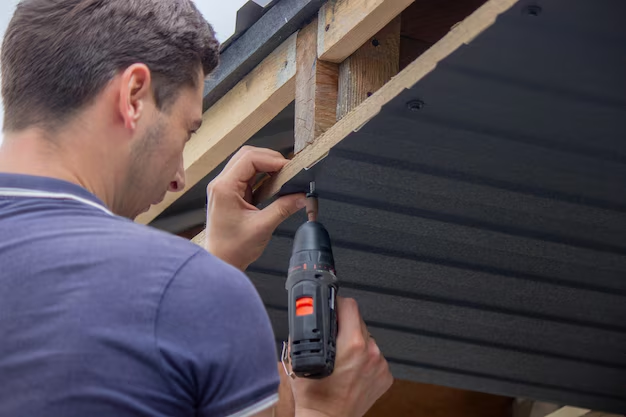Fixing Shingles: DIY Guide to Repairing Your Roof
Roofs are like the crowns of our homes, braving all sorts of weather to keep us safe and dry. Yet, as with any hardworking part of a house, roofs can show signs of wear and tear. If you’ve noticed damaged shingles, don't panic. While calling in the professionals is always an option, you can also learn how to replace shingles on a roof yourself and save some money in the process.
Assessing the Damage
Before you break out the tools, inspect your roof to determine which shingles need replacing. Damaged shingles often appear cracked, curled, or missing entirely. If a storm has recently passed, you might find shingles scattered around your yard, which is a sure sign that some replacement work is needed.
Gathering Your Tools
To replace shingles, gather a hammer, roofing nails, a pry bar, a utility knife, and of course, replacement shingles. You’ll also need a ladder to safely reach your roof and a safety harness for stability.
Safety First
Working on a roof presents risks. Ensure the weather is clear and dry to avoid slippery surfaces. Always use a sturdy ladder and secure yourself with a harness if the roof is steep.
Steps to Replace Shingles
Remove Damaged Shingles: Slide the pry bar under the damaged shingle. Lift gently to break the seal and loosen the nails that hold the shingles in place. Remove nails carefully with the hammer and pry bar.
Prepare the Area: After removing the old shingles, ensure the underlying deck is clean and dry. If there’s any rot or damage, it may need a more thorough repair.
Install New Shingles: Slide the new shingle into place, aligning it with the existing ones. Use roofing nails to secure the new shingle, ensuring they are flush with the shingle surface to prevent water entry.
Seal the Replacement: Apply roofing cement under the tabs of the new shingle to secure it tightly. This step is crucial to ensure the new shingle doesn’t get lifted in the next big wind.
Check Your Work: Ensure all shingles lie flat and are securely fastened. Properly aligned shingles not only protect your home but also enhance its aesthetic appeal.
Financial Considerations and Assistance
Replacing a few shingles can be a manageable weekend project, but extensive roof repair can be costly. Here’s where some savvy financial planning can help. Homeowners might qualify for government aid programs to assist with roofing costs, especially after natural disasters.
Exploring Assistance Options
- Home Repair Loans: These are loans that can cover home improvement projects, including roof repairs.
- FEMA Housing Assistance: In case of widespread weather damage, FEMA offers assistance for home repairs in declared disaster areas.
- Local Grants: Some local governments provide grants or low-interest loans for home repairs to low-income homeowners.
For those considering major renovations beyond just shingle replacement, structuring costs with credit card solutions or home equity lines could offer flexibility. Always review terms carefully to choose the best option for your financial situation.
Additional Resources
🔧 Home Repair Loans and Grants
📋 Federal Emergency Management Agency (FEMA) Support
💳 Credit Card Financing Options
📈 Home Equity Line of Credit (HELOC)
🎓 Energy-Efficient Mortgage Programs for green renovations, which can include roofing upgrades.
Repairing your roof's shingles yourself can be empowering and budget-friendly. Remember, keeping up with regular maintenance can prevent long-term damage and costly repairs. Should you decide professional assistance or additional financial resources suit your needs best, numerous tools and programs are ready to help ease the process. Your home deserves the best care, and with the right approach, it can be both manageable and affordable.
